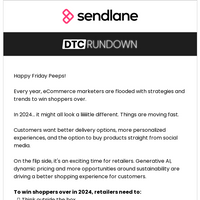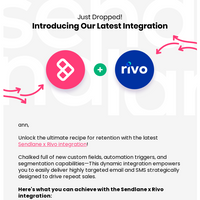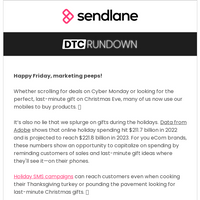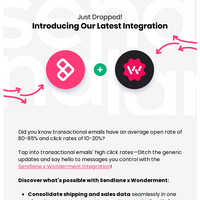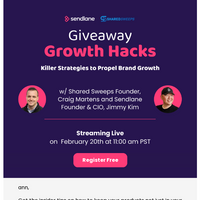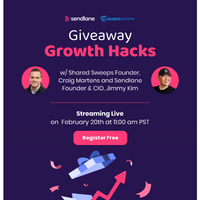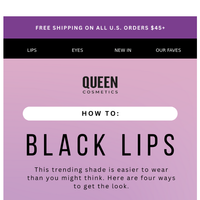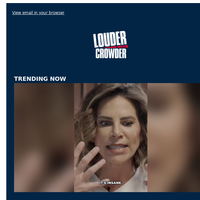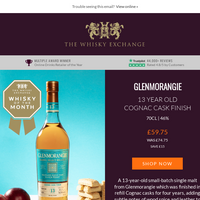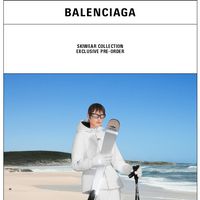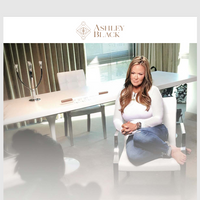
Happy Friday, ya’ll! ✨
Ah, the magic of email automation—the unsung hero of driving sales, engagement, and fostering loyalty.
Depending on your customers unique behavior and interactions with your website, they can be used to thank customers for purchases, welcome new customers, re-engage existing customers or even nurture your most loyal.
Together we’ll dive into6 killer triggered email examples plus our tips to add a touch of finesse and personalization—ensuring your customers feel nurtured and your sales make strides. 📈
Up and Coming 🗓️
We're just 4 days away from our next free webinar—Maximizing eCommerce ROI: Advanced Strategies for Email Deliverability, Compliance & Segmentationft. Larry Kim, Founder & CEO of Customers.ai, and Jimmy Kim, Founder & CIO of Sendlane.
These two industry experts will be diving into all of the crucial trends and updates that are shaping the future of eCommerce.
From optimizing email deliverability to navigating website visitor identification and personalization, you won’t want to miss it!
Secure your spot here.
In the mean time, let’s venture into the craft of triggered emails and how you can leverage them in your email marketing strategy. 💪
6 Best Triggered Email Examples to Optimize your Strategy

Differences Between a Triggered Emails and Regular Emails
Before we look at triggered emails, let’s consider the differences between triggered and regular email campaigns.
Triggered emails are typically:
- Based on customer actions or behaviors
- Personalized with customer data, making them tailored to individual customers
- Triggered by any number of actions or behaviors, from subscribing to a newsletter or making a purchase, to completing an event registration or opting in for a webinar series
- Sent in a timely manner, right after the customer action or behavior, while regular emails are sent at a predetermined time
- Personalized in that they can be triggered by any number of customer actions or behaviors
While regular campaigns are typically:
- One-off sends to a segmented base of contacts
- Sent at at any frequency
- Not based off contacts’ actions taken but rather based on their interests
Triggered emails, while automated, can still come across as authentic and on-brand. You can create a series of messages that are sent out based on a trigger or set schedule without the need for manual intervention. This can be incredibly useful for welcoming new subscribers to your email list, following up with customers after a purchase, or sending reminders about upcoming events.
Not only do automated emails save time, but they also ensure that your messages are consistent and on-brand. Plus, by using automation to send targeted, personalized messages to your audience, you can improve engagement and increase conversions.
6 Top Triggered Email Examples
Now that we’ve looked at the differences between triggered and regular emails, let’s look at6 triggered email examples.
1. Abandoned Cart emails

An abandoned cart email is triggered when a customer adds items to their shopping cart but doesn’t complete the purchase. 🛒 This type of triggered email is used to remind customers about their incomplete purchases and encourage them to finish the checkout process.
They are effective in increasing sales, as it helps to push customers who are close to the finish line over the edge and complete their purchase.
You can use it when:
- A customer has added items to their online shopping cart but has not completed the purchase (typically 3-4 hours after cart abandonment)
- A customer has shown intent to purchase but has not completed the transaction
- You want to send a special offer or discount to a shopper who has left an item in their cart
2. Recommendation emails

Recommendation emails are triggered when a customer has purchased an item or interacted with your website in some way. They are designed to show customers other items they may be interested in based on their previous shopping habits or interests. By recommending related products and services, you can engage customers and increase sales. 💵
You can use it when a customer:
- Makes a purchase
- Visits a specific product page
- Adds an item to their cart but doesn't complete the purchase
- Has shown interest in a particular product category
- Has been inactive for a while
- Has already made a purchase and you want to upsell them
3. Back-in-Stock emails

Back-in-stock emails are triggered when a product that was previously out of stock is now available for purchase. This type of email is an important tool for businesses to keep inventory levels in check and ensure customers can find the products they need quickly and easily. 🫰
There are multiple types of back-in-stock emails, such as product-specific, category-specific, and general back-in-stock reminders.
You can use it when:
- There are changes in inventory levels and you want to generate excitement and drive traffic
- A contact who has opted in to receive notifications once new inventory is added
- You want to promote new products
- A customer has shown interest in a particular product and you want to give them a reminder
4. Welcome emails

Welcome emails are triggered when a customer takes action, such as signing up for a mailing list or creating an account on your website. This type of email is essential to introducing customers to your brand and starting the relationship off on the right foot. 🤝
They can also be used to remind customers of your brand's mission, educate customers on products or services, and provide helpful information they may need as a customer.
You can use it when:
- A new contact signs up for a email list
- A customer makes their first purchase from a brand
- A customer creates a new account
- A customer subscribes to a brand's newsletter
- A contact downloads a free resource
- A customer subscribes to a blog or podcast
- A contact attends a brand's webinar or event
5. Feedback emails

A customer feedback email is automatically triggered to send after a designated number of days following a purchase or customer service interaction. We recommend at least 14 days after purchase to allow the customer to form an opinion on the product. interaction.
Feedback emails allow companies to gather valuable customer feedback and make improvements based on their input. These emails help to develop relationships with customers by encouraging them to share their thoughts and opinions and show that the company cares about their experience. 🗣️
You can use it when a customer:
- Makes a purchase
- Interacts with customer service
- Visits the website
- Subscribes to a newsletter or signs up for an account
- Attends an event or webinar
- Receives a product or service
The purpose of these emails is to gather valuable feedback from the customer, which can be used to improve the overall customer experience and drive business growth.
6. Birthday emails
.png)
Birthday emails are triggered when a customer reaches their birthday anniversary. 🎉
These triggered emails show customers that the company cares about them and provides special offers or discounts to encourage repeat purchases. The main goal of triggered birthday emails is to make customers feel appreciated and valued by the brand.
Add a personal touch by including the customer's name and other details that make them feel special and include a coupon code or discount can help to further engage customers and encourage them to take advantage of the offer.
You can use it when:
- It’s a recipient's actual birthday
- It’s few days before or at the beginning of their birth month
- You want to show appreciation of a customers loyalty
- You want to offer a special discount as a birthday present
Harnessing the Power of Triggered Email Automation
By leveraging powerful features in platforms like Sendlane, brands can usetriggered emails in their email automations to send timely and relevant messages to their customer base.
These emails not only engage customers at crucial touch points along their journey, but also ultimately enhance conversion rates and drive customer loyalty.
Implement the tactics we shared today in your email marketing strategy and explore all of the ways you can engage your audience and optimize the customer journey.
Thanks for diving into today’s DTC Rundown with us!
If you enjoyed today’s content, please share with a friend or colleague.
See you next time! ✌️
|
NL Plus 6 Examples to Streamline your Retention Strategy͏ ͏ ͏ ͏ ͏ ͏ ͏ ͏ ͏ ͏ ͏ ͏ ͏ ͏ ͏ ͏ ͏ ͏ ͏ ͏ ͏ ͏ ͏ ͏ ͏ ͏ ͏ ͏ ͏ ͏ ͏ ͏ ͏ ͏ ͏ ͏ ͏ ͏ ͏ ͏ ͏ ͏ ͏ ͏ ͏ ͏ ͏ ͏ ͏ ͏ ͏ ͏ ͏ ͏ ͏ ͏ ͏ ͏ ͏ ͏ ͏ ͏ ͏ ͏ ͏ ͏ ͏ ͏ ͏ ͏ ͏ ͏ ͏ ͏ ͏ ͏ ͏ ͏ ͏ ͏ ͏ ͏ ͏ ͏ ͏ ͏ ͏ ͏ ͏ ͏ ͏ ͏ ͏ ͏ ͏ ͏ ͏ ͏ ͏ ͏ ͏ ͏ ͏ ͏ ͏ ͏ ͏ ͏ ͏ ͏ ͏ ͏ ͏ ͏ ͏ ͏ ͏ ͏ ͏ ͏ ͏ ͏ ͏ ͏ ͏ ͏ ͏ ͏ ͏ ͏ ͏ ͏ ͏ ͏ ͏ ͏ ͏ ͏ ͏ ͏ ͏ ͏ ͏ ͏ ͏ ͏ ͏ Happy Friday, ya’ll! ✨Ah, the magic of email automation—the unsung hero of driving sales, engagement, and fostering loyalty.Depending on your customers unique behavior and interactions with your website, they can be used to thank customers for purchases, welcome new customers, re-engage existing customers or even nurture your most loyal.Together we’ll dive into6 killer triggered email examples plus our tips to add a touch of finesse and personalization—ensuring your customers feel nurtured and your sales make strides. 📈Up and Coming 🗓️We're just 4 days away from our next free webinar—Maximizing eCommerce ROI: Advanced Strategies for Email Deliverability, Compliance & Segmentationft. Larry Kim, Founder & CEO of Customers.ai, and Jimmy Kim, Founder & CIO of Sendlane.These two industry experts will be diving into all of the crucial trends and updates that are shaping the future of eCommerce.From optimizing email deliverability to navigating website visitor identification and personalization, you won’t want to miss it! Secure your spot here.In the mean time, let’s venture into the craft of triggered emails and how you can leverage them in your email marketing strategy. 💪 6 Best Triggered Email Examples to Optimize your Strategy Differences Between a Triggered Emails and Regular EmailsBefore we look at triggered emails, let’s consider the differences between triggered and regular email campaigns.Triggered emails are typically:Based on customer actions or behaviorsPersonalized with customer data, making them tailored to individual customersTriggered by any number of actions or behaviors, from subscribing to a newsletter or making a purchase, to completing an event registration or opting in for a webinar seriesSent in a timely manner, right after the customer action or behavior, while regular emails are sent at a predetermined timePersonalized in that they can be triggered by any number of customer actions or behaviorsWhile regular campaigns are typically:One-off sends to a segmented base of contactsSent at at any frequencyNot based off contacts’ actions taken but rather based on their interestsTriggered emails, while automated, can still come across as authentic and on-brand. You can create a series of messages that are sent out based on a trigger or set schedule without the need for manual intervention. This can be incredibly useful for welcoming new subscribers to your email list, following up with customers after a purchase, or sending reminders about upcoming events.Not only do automated emails save time, but they also ensure that your messages are consistent and on-brand. Plus, by using automation to send targeted, personalized messages to your audience, you can improve engagement and increase conversions.6 Top Triggered Email ExamplesNow that we’ve looked at the differences between triggered and regular emails, let’s look at6 triggered email examples.1. Abandoned Cart emails An abandoned cart email is triggered when a customer adds items to their shopping cart but doesn’t complete the purchase. 🛒 This type of triggered email is used to remind customers about their incomplete purchases and encourage them to finish the checkout process.They are effective in increasing sales, as it helps to push customers who are close to the finish line over the edge and complete their purchase.You can use it when:A customer has added items to their online shopping cart but has not completed the purchase (typically 3-4 hours after cart abandonment)A customer has shown intent to purchase but has not completed the transactionYou want to send a special offer or discount to a shopper who has left an item in their cart2. Recommendation emails Recommendation emails are triggered when a customer has purchased an item or interacted with your website in some way. They are designed to show customers other items they may be interested in based on their previous shopping habits or interests. By recommending related products and services, you can engage customers and increase sales. 💵You can use it when a customer:Makes a purchaseVisits a specific product pageAdds an item to their cart but doesn't complete the purchaseHas shown interest in a particular product categoryHas been inactive for a whileHas already made a purchase and you want to upsell them3. Back-in-Stock emails Back-in-stock emails are triggered when a product that was previously out of stock is now available for purchase. This type of email is an important tool for businesses to keep inventory levels in check and ensure customers can find the products they need quickly and easily. 🫰There are multiple types of back-in-stock emails, such as product-specific, category-specific, and general back-in-stock reminders.You can use it when:There are changes in inventory levels and you want to generate excitement and drive trafficA contact who has opted in to receive notifications once new inventory is addedYou want to promote new productsA customer has shown interest in a particular product and you want to give them a reminder4. Welcome emails Welcome emails are triggered when a customer takes action, such as signing up for a mailing list or creating an account on your website. This type of email is essential to introducing customers to your brand and starting the relationship off on the right foot. 🤝They can also be used to remind customers of your brand's mission, educate customers on products or services, and provide helpful information they may need as a customer.You can use it when:A new contact signs up for a email listA customer makes their first purchase from a brandA customer creates a new accountA customer subscribes to a brand's newsletterA contact downloads a free resourceA customer subscribes to a blog or podcastA contact attends a brand's webinar or event5. Feedback emails A customer feedback email is automatically triggered to send after a designated number of days following a purchase or customer service interaction. We recommend at least 14 days after purchase to allow the customer to form an opinion on the product. interaction.Feedback emails allow companies to gather valuable customer feedback and make improvements based on their input. These emails help to develop relationships with customers by encouraging them to share their thoughts and opinions and show that the company cares about their experience. 🗣️You can use it when a customer:Makes a purchaseInteracts with customer serviceVisits the websiteSubscribes to a newsletter or signs up for an accountAttends an event or webinarReceives a product or serviceThe purpose of these emails is to gather valuable feedback from the customer, which can be used to improve the overall customer experience and drive business growth.6. Birthday emails Birthday emails are triggered when a customer reaches their birthday anniversary. 🎉These triggered emails show customers that the company cares about them and provides special offers or discounts to encourage repeat purchases. The main goal of triggered birthday emails is to make customers feel appreciated and valued by the brand.Add a personal touch by including the customer's name and other details that make them feel special and include a coupon code or discount can help to further engage customers and encourage them to take advantage of the offer.You can use it when:It’s a recipient's actual birthdayIt’s few days before or at the beginning of their birth monthYou want to show appreciation of a customers loyaltyYou want to offer a special discount as a birthday presentHarnessing the Power of Triggered Email AutomationBy leveraging powerful features in platforms like Sendlane, brands can usetriggered emails in their email automations to send timely and relevant messages to their customer base.These emails not only engage customers at crucial touch points along their journey, but also ultimately enhance conversion rates and drive customer loyalty.Implement the tactics we shared today in your email marketing strategy and explore all of the ways you can engage your audience and optimize the customer journey.Thanks for diving into today’s DTC Rundown with us!If you enjoyed today’s content, please share with a friend or colleague.See you next time! ✌️ Terms & ConditionsSupportBlog Sendlane 2712 Loker Avenue West #1107, Carlsbad, CA, United States, 92010 To update or remove your contact information please Manage Your Subscription.

%201%20(2).png)
